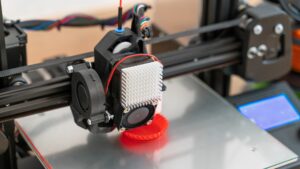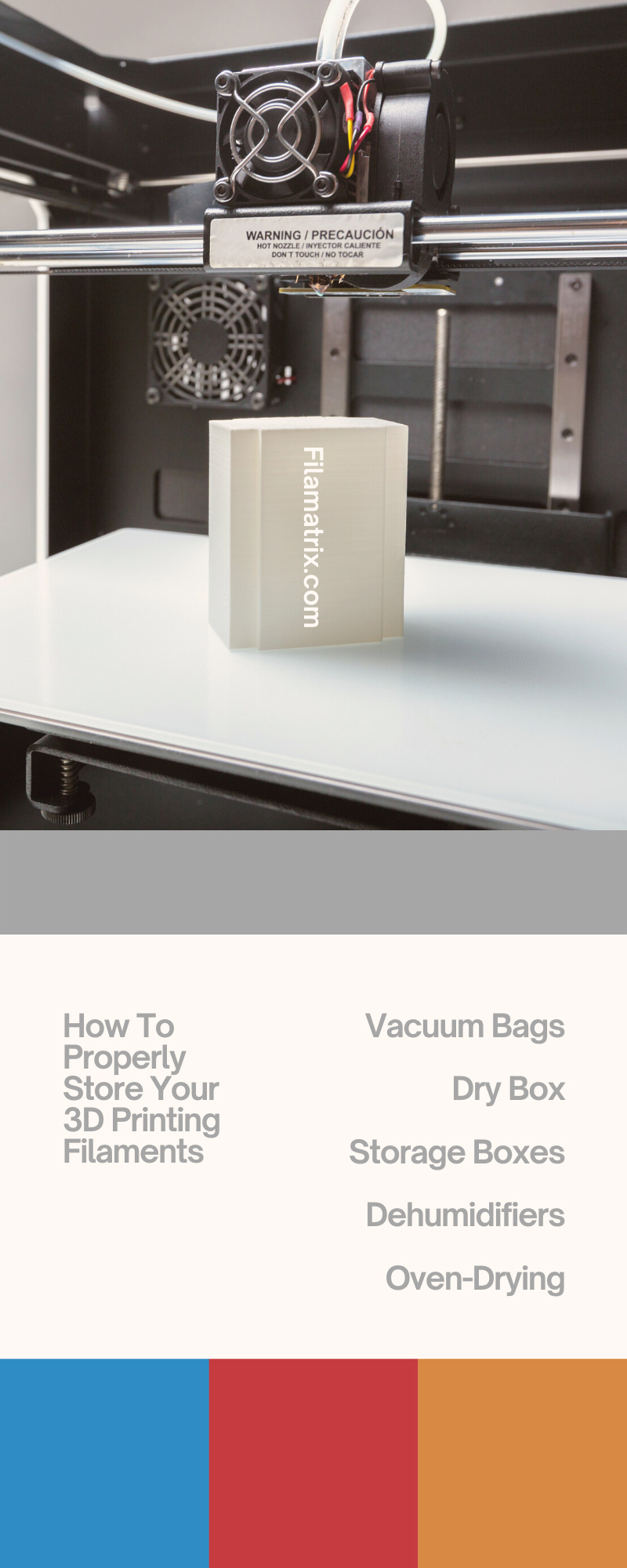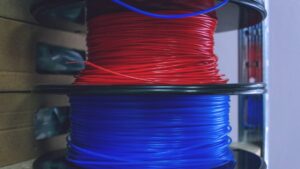
A Look at the Different Densities of 3D Printing Materials
There’s so much to learn about 3D printing materials. Come and find out what to look for when examining the different densities of 3D printing filaments.
844-810-1385

Filament storage is a significant issue for 3D printers. Moisture from the air gets into your filaments due to improper storage, which is terrible news, as you’ll discover shortly. Continue reading for a step-by-step approach to properly storing filaments, so you don’t waste money on low-quality filaments. Here is how to properly store your 3D printing filaments.
Before we go into filament storage, it’s worth noting what happens to filaments that aren’t properly stored. Filaments used in 3D printing are polymers, which means they may be broken down through a process called hydrolysis. If filaments are stored improperly, and moisture from the air comes in touch with them, the polymer breaks down when heated at the point of extrusion, weakening the filament. Any pieces produced with this “wet” filament will lack the shine and luster and strength you desire. When nylon, polycarbonate, and copolyester filaments become wet and heated, they are highly sensitive to hydrolysis. 3D printing filaments are hygroscopic, which is a fancy way of saying they absorb water easily. As a result, avoiding contact with damp air is the solution to the storage problem.
There are a lot of storage options for your filaments, but a lot of them are either too expensive, too inconvenient, or too time-consuming. As a hobbyist, you want to keep things as cheap and basic as possible. Enter the humble Vacuum. Vacuum bags of high quality keep your filaments in an airless environment. You’ll want to get bags with a suction valve so you can get rid of the air. Additionally, for optimal air impermeability, look for bags with a double-zipper system. Using a regular household vacuum cleaner to suck the air out of the bags is a simple way to create an air-free environment. In one vacuum bag, you can fit around four filament spools. Packets of six bags can be purchased for around $20. This should be sufficient for any 3D printing enthusiast. Thus, this is a low-cost and simple solution to the problem of filament storage that you should explore.
A similar solution using a different approach would be to use vacuum sealer similar to what you may use for food storage. In this case, you would likely be sealing a single spool in one bag. These bags can be purchased as pre-sized individual bags, or in large rolls, allowing you to cut to size
A dry box is another excellent option for producing a moisture-free environment for filament storage. These cabinets provide the low-humidity atmosphere that filament storage requires. The method works by constantly dehumidifying the interior of the box with an electronic dehumidifier system. As a result, the amount of time your filament comes into contact with damp air will be minimal. For you, this means more durable and dependable printing.
Transparent storage bins with sealed lids are another excellent option for properly storing 3D printing filaments. The concept behind the sealed lids is that no new moisture from the outside can access the filament. Transparency is necessary from the standpoint of practicality. You’ll never know what filament is inside which boxes if you can’t look inside them. Store your filament spools in transparent storage boxes with sealed lids. Use a cheap renewable dehumidifier or an appropriately sized bag of silica gel desicant to absorb any remaining moisture inside the boxes. Any filament that you suspect has come into contact with moist air needs to be dried out in the oven.
In terms of size, you’ll want something large enough to stack a few spools with a diameter of at least 20 cm. An excellent starting point is something with a length of 40 cm and a width of 30 cm. The height will vary depending on how many filament spools you wish to stack, but it should be around 40 cm.
One difficulty with storage boxes is the necessity to minimize the humidity of the air that remains inside the box once the filament is placed in it. You can buy a dehumidifier to fix this problem. You may be forgiven for assuming that this approach is already unworkable. Dehumidifiers, on the other hand, do not require batteries or wires to operate. They’re also entirely renewable. To put it another way, they are the epitome of practicality. You can find a nice dehumidifier on sites like Amazon for as low as $15-20.
These dehumidifiers must be replaced approximately once a month. Simply plug your dehumidifier into a power outlet when the silica gel beads change color to renew it. Most dehumidifiers have a color indicator that lets you know when it’s time to replace it. Like vacuum bags, silica gel beads are used to collect moisture. Because each box can only hold around 5 or 6 spools, most individuals should be able to get by with two storage boxes and two dehumidifiers. That initial expense is countered by the fact that your dehumidifier is renewable. Simply place your dehumidifier inside the storage box with the indication facing outside when you’re confident it’s completely charged.
So far, we’ve looked at some inexpensive and practical filament storage options. However, it is also necessary to solve the problem of drying filament that has become saturated with moisture. When printing with damp filament, you’ll be using a weaker and more erratic filament than usual. To put it another way, it’s quite likely to degrade the quality of your printed result.
You can use that all-around useful appliance—the kitchen oven—to dry your filament. In particular, a fan oven will be required since it evenly distributes air across the interior. Warm air is constantly circulated around the spool due to the balanced air flow. The Glass Transition Temperature (Tg) of the material is an important consideration when considering whether or not your filament is acceptable for oven drying. This is the temperature at which the polymer transforms from a hard, glassy substance to a soft, rubbery substance.
Another option for drying your filament would be to use a food dehydrator. Many of these are relatively inexpensive and are a great alternative if you find you’re regularly needing to dry materials. Most food dehydrators reach temperatures ~165 °F, which should cover most of your drying needs. Some of these have even been modified more specifically towards 3D printing, with rotating platforms and small holes to feed filament through, allowing for actively drying materials while printing.”
The following concerns might arise when 3D printing filament collects moisture from the air around it:
You have two practical and relatively inexpensive solutions for properly storing filament so that it does not come into touch with damp air:
Any filament that you suspect has been exposed to moist air should be dried in the oven or food dehydrator.
We hope you have enjoyed our guide on properly storing your 3D printing filaments! If you are looking to purchase PLA 3D printer filament, be sure to reach out to our team at Filamatrix! We have an amazing supply of all kinds of filaments to ensure we are your one-stop shop for all filament purchases!


There’s so much to learn about 3D printing materials. Come and find out what to look for when examining the different densities of 3D printing filaments.

Those interested in 3D printing have a lot to learn on how to use the system properly. Find out what you need to know about 3D printing and humidity levels.

3D printing has many variables that both beginners and experts need to know. Find out what effects temperature has on 3D printer filament.
Get professional insights, industry news, and our latest deals